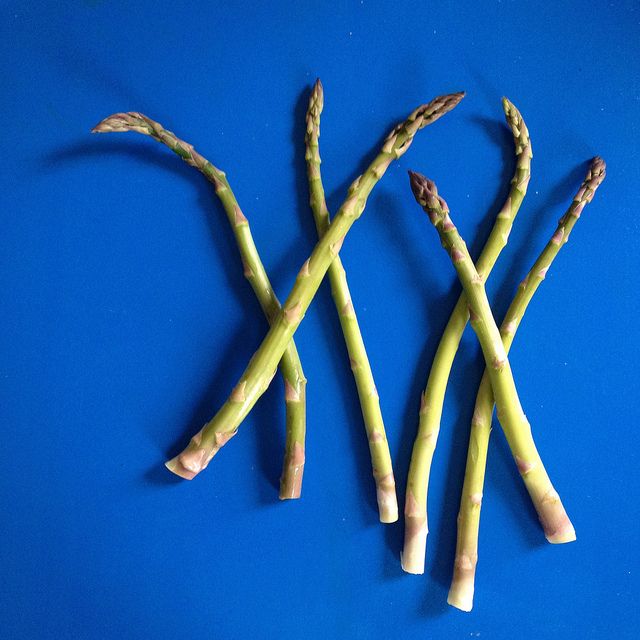Popular on Food52
Continue After Advertisement
4 Comments
MotherWouldKnow
April 2, 2012
Roast or grill them! In a 425 degree oven (regular or toaster oven) or on the grill, with just a bit of lemon, pepper, and a fancy salt. Totally delicious, insanely easy, and great leftovers, cut up in salad or with boiled/roasted/grilled potatoes.
pulcinella #.
March 31, 2012
Asparagus is my favorite vegetable! My favorite way to cook them is to first slice them into 1.5 - 2 inch pieces and blanch (1.5 - 2 minutes) them in boiling, sea-salted water. YUM! Al dente asparagus!!! So not like the mushy spears my mother used to cook! I also add them to everything after blanching: marinated vegetable salads, stir fry dishes, scrambled eggs, etc. Just toss them in for the last minute of cooking.
We tried growing asparagus in a small patch in our backyard. It was not very satisfying. Even with about 20 plants, we could only harvest a couple of spears a day; and they would bolt so quickly you really had to pick every morning. The asparagus became just a snack to munch on if you were lucky enough to pick a couple!
We tried growing asparagus in a small patch in our backyard. It was not very satisfying. Even with about 20 plants, we could only harvest a couple of spears a day; and they would bolt so quickly you really had to pick every morning. The asparagus became just a snack to munch on if you were lucky enough to pick a couple!
pulcinella #.
March 31, 2012
Asparagus is my favorite vegetable! My favorite way to cook them is to first slice them into 1.5 - 2 inch pieces and blanch (1.5 - 2 minutes) them in boiling, sea-salted water. YUM! Al dente asparagus!!! So not like the mushy spears my mother used to cook! I also add them to everything after blanching: marinated vegetable salads, stir fry dishes, scrambled eggs, etc. Just toss them in for the last minute of cooking.
We tried growing asparagus in a small patch in our backyard. It was not very satisfying. Even with about 20 plants, we could only harvest a couple of spears a day; and they would bolt so quickly you really had to pick every morning. The asparagus became just a snack to munch on if you were lucky enough to pick a couple!
We tried growing asparagus in a small patch in our backyard. It was not very satisfying. Even with about 20 plants, we could only harvest a couple of spears a day; and they would bolt so quickly you really had to pick every morning. The asparagus became just a snack to munch on if you were lucky enough to pick a couple!


See what other Food52 readers are saying.